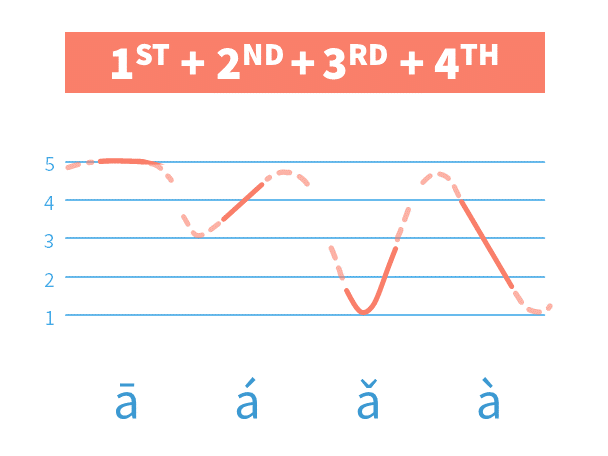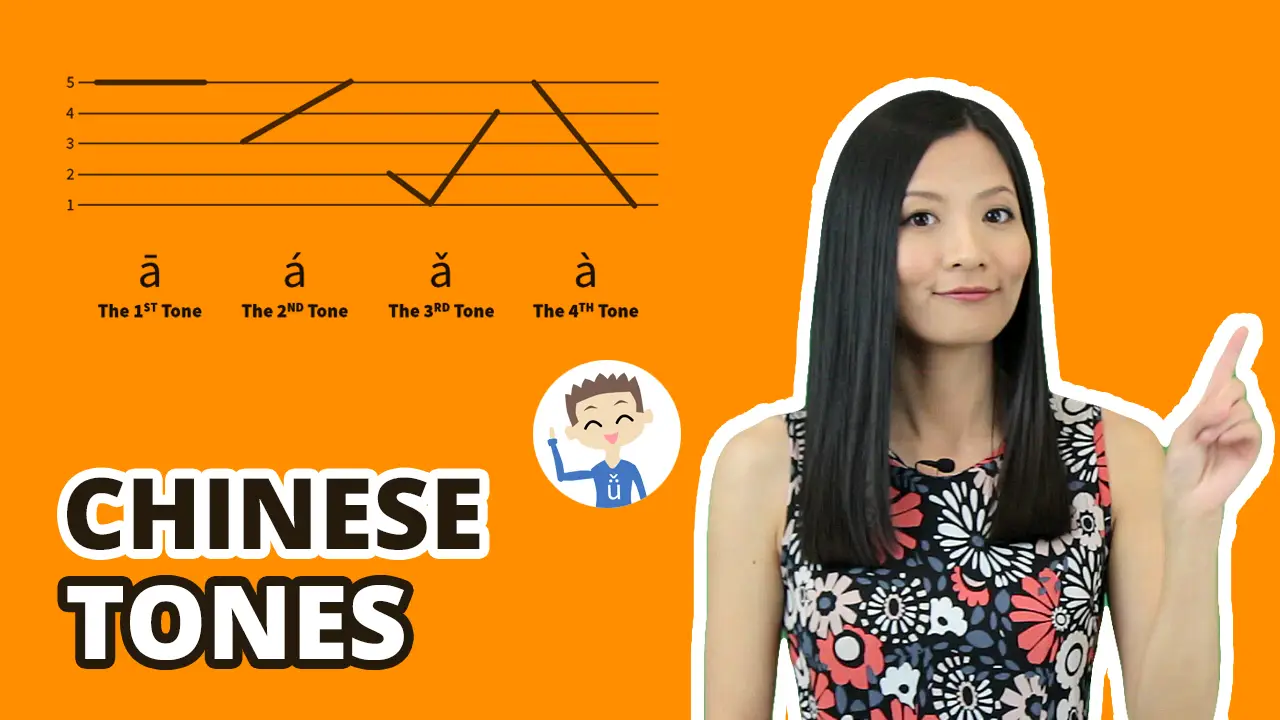Tone Lesson 15 – Final Review: Tone Groups & Sentences
FINAL REVIEW - WORKING TOWARDS THE PERFECT TONE PRONUNCIATION
So far we've finished everything we need to know about Mandarin Chinese Tones. We've practiced all Four Tones, the Neutral Tones, and a lot of Tone Change Rules. Today we will try to mix everything up, and do a final review. We'll be practicing with Tone Groups and sentences! Ready? Let's go!
How to Sound Native When Speaking Chinese
We already know that in Chinese, each of the Four Tones follows their own pitch range. But when people speak in real life, they range is not as strict as it could be. It is more soften and relaxed. If we put the Four Tones together, the theoretical vs. real-life pronunciation will be like this:
Theoretical Pronunciation:
Each Tone clear and strict

Real-life Pronunciation:
Tones soften and changed

Mandarin Tone Trainer: Final Review
Please watch the video and practice the following Tone exercises.
NO.1 TONE GROUPS
Please be careful that the Third Tones in the following Tone Groups are pronounced in the Half Third Tone.
GROUP 1
| PINYIN | 汉字 |
|---|---|
| xī qí gǔ guài | 稀奇古怪 |
| xīn zhí kǒu kuài | 心直口快 |
| shān méng hǎi shì | 山盟海誓 |
| suān tián kǔ là | 酸甜苦辣 |
GROUP 2
| PINYIN | 汉字 |
|---|---|
| shòu bǐ nán shān | 寿比南山 |
| nòng jiǎ chéng zhēn | 弄假成真 |
| guò yǎn yún yān | 过眼云烟 |
| fù shuǐ nán shōu | 覆水难收 |
NO.2 SENTENCES GROUPS
GROUP 1
Please pay attention to the Neutral Tone and the Tone change of character Bu 不.
| 1 | ||
|---|---|---|
| bù shuō bú dài biǎo bù zhī dào 'a | ||
| 不说不代表不知道啊。 | ||
| Not saying doesn't mean not knowing. |
| 2 | ||
|---|---|---|
| nǐ mā ma bú huì bù lai de | ||
| 你妈妈不会不来的。 | ||
| Your mom is not going to not come. |
| 3 | ||
|---|---|---|
| tā bù yí dìng bú zài jiā ba | ||
| 他不一定不在家吧。 | ||
| He is not necessarily not at home. |
GROUP 2
Please pay attention to the Two Fourth Tones combination and the Tone of the character Yi 一.
| 1 | ||
|---|---|---|
| zhè shì yí jiàn zhòng yào de shì | ||
| 这是一件重要的事。 | ||
| This is an important matter. |
| 2 | ||
|---|---|---|
| tā yì zǎo jiù zài xiě zuò yè | ||
| 他一早就在作业。 | ||
| He started doing homework early in the morning. |
| 3 | ||
|---|---|---|
| nǐ shàng kè yì zhí zài shuì jiào | ||
| 你上课一直在睡觉。 | ||
| You were sleeping the whole time of the class. |
9 Comments
Leave a Reply
You must be logged in to post a comment.

If we don’t know the real word of yidali and yilake, the tone was the same tone for my ears. But in video those words different tones when speaking.
Big jump in difficulty with these sentences. It’s difficult to speak so quickly at this early stage
Why in “italy” Yi (4) Da (4) Li (4) is the “Yi” in 4th tone? I thought Yi (if not a mathematical Yi) becomes 2nd tone if followed by a 4th tone?
The yi in Italy is a different character than the “number one” yi.
This lesson is the most difficult for me. I don’t have problems with the tones or syllables, but to combine them into sentences is a whole different story.
I got almost all the ones at the end wrong but really I’m just trying to work through all these courses and then come back to them to reference as I need to. I know I’ll get the hang of it the more I practice…
This lesson was 10x more challenging than any other lessons.
This class was very helpful for me to understand more about the theory of Chinese tones and their changes in certain situations. When you are speaking syllables slowly, I mostly get the tones right and also don’t have so much trouble to pronounce single words slowly. But when you’re going to speak in a normal speaking speed I start to confuse tones and have trouble recognizing the tones for sure. I have also really trouble to pronounce whole sentences. I am super slow and pronounce the tones exaggerated but when I try to speak a pinch more fluently, faster, I have trouble to keep the pronunciation of the tones clearly.
I’d appreciate listening exercises of whole sentences in normal speaking speed, without given tones, in which must be decided for every syllable if it’s 1st, 2nd, 3rd, 4th or any of the “half” tones. I definitely need more listening practice.
I would expect the HSK Level 1 and HSK Level 2 courses to include many example conversations with English/pinyin/Chinese transcripts.